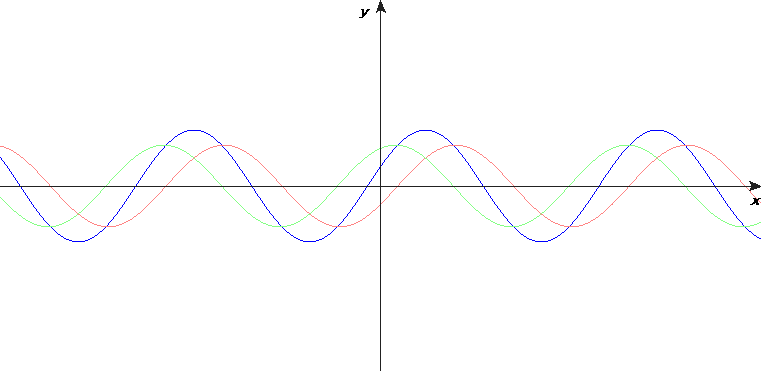A-level Physics (Advancing Physics)/Standing Waves
When two coherent waves - waves of equal frequency and amplitude - travel in opposite directions through the same area, an interesting superposition effect occurs, as is shown in the following animation:

Some areas of the resultant waveform consistently have an amplitude of 0. These are known as nodes. At other points (half-way between the nodes), the resultant waveform varies from twice the amplitude of its constituent waveforms in both directions. These points are known as antinodes. Everywhere in between the nodes and antinodes varies to a lesser degree, depending on its position.
This effect only occurs if the two waveforms have the same amplitude and frequency. If the two waves have different amplitudes, the resultant waveform is similar to a standing wave, except that it has no nodes, and 'moves'.
Because of these conditions, standing waves usually only occur when a waveform is reflected back on itself. For example, in a microwave oven, the microwaves are reflected by the metal on the other side of the oven from the transmitter. This creates nodes and antinodes. Since nothing cooks at the nodes, a turntable is necessary to ensure that all of the food passes through the antinodes and gets cooked.
Frequencies
editConsider a string, attached at either end, but allowed to move freely in between. If you pluck it, you create a wave which travels along the string in both directions, and is reflected at either end of the string. This process keeps on happening, and so a standing wave pattern is created. The string goes up, and then down, as shown in the first row of the diagram on the right. If you imagine the top arc as the first half of a waveform, you can see that when the string is vibrating at the fundamental frequency, the string is half as long as the wavelength: it is ½λ long. Therefore, λ=2L
If you were to pinch the string in the middle, and then pluck it on one side, a different standing wave pattern would be generated. By plucking, you have created an antinode, and by pinching, you have created a node. If you then let go of the string, the standing wave pattern spreads, and the string length now equals the wavelength. This is known as the first harmonic.
As you pinch the string in descending fractions (½, ⅓, ¼, etc.), you generate successive harmonics, and the total length of the string is equal to additional ½λ wavelengths.
Pipes
editConsider a pipe which is open at one end, and closed at the other. In pipes, waves are reflected at the end of the pipe, regardless of whether it is open or not. If you blow across the end of the tube, you create a longitudinal wave, with the air as the medium. This wave travels down the tube, is reflected, travels back, is reflected again, and so on, creating a standing wave pattern.
The closed end of the pipe must be a node; it is the equivalent of pinching a string. Similarly, the open end must be an antinode; blowing across it is the equivalent of plucking the string.
Harmonics can be present in pipes, as well. This is how musical instruments work: an open hole in a wind instrument creates an antinode, changing the frequency of the sound, and so the pitch.
Questions
edit1. The air in a 3m organ pipe is resonating at the fundamental frequency. Organ pipes are effectively open at both ends. What is the wavelength of the sound?
2. A string is vibrating at the second harmonic frequency. How many wavelengths long is the standing wave created?
3. Express, in terms of λ, the length of a pipe which is closed at one end, where λ is the length of one wave at the fundamental frequency.
